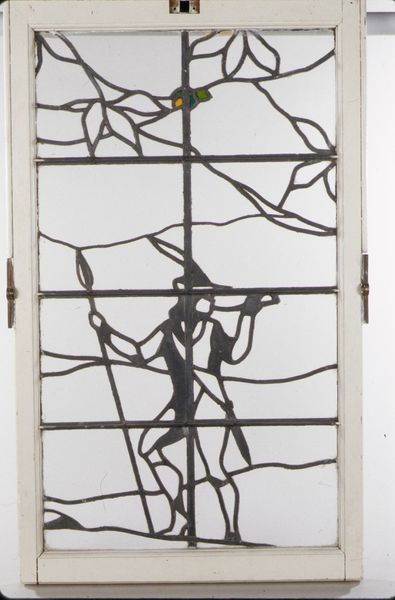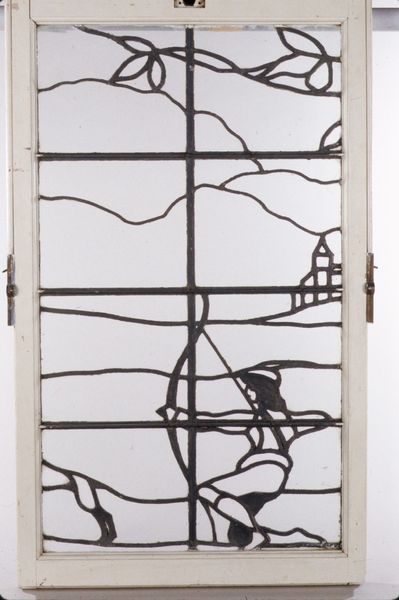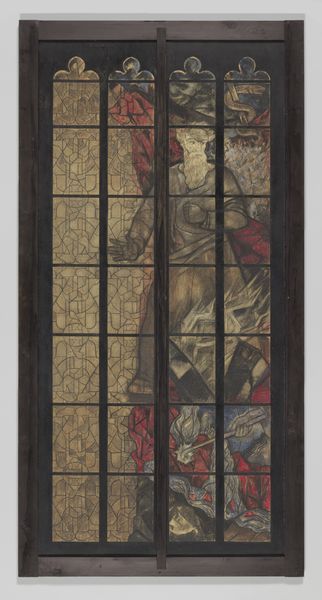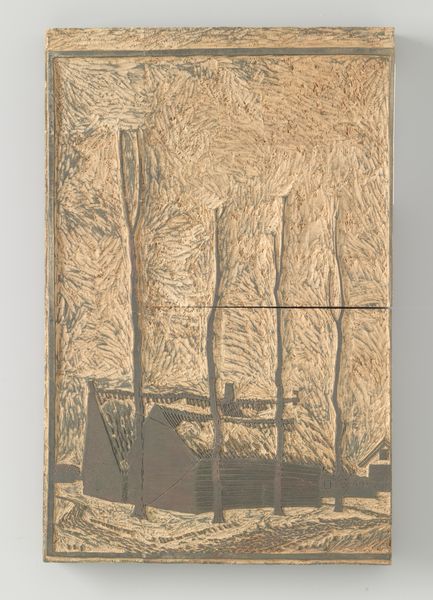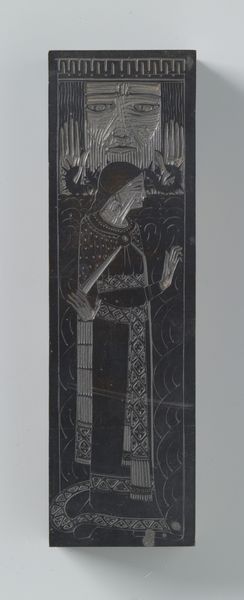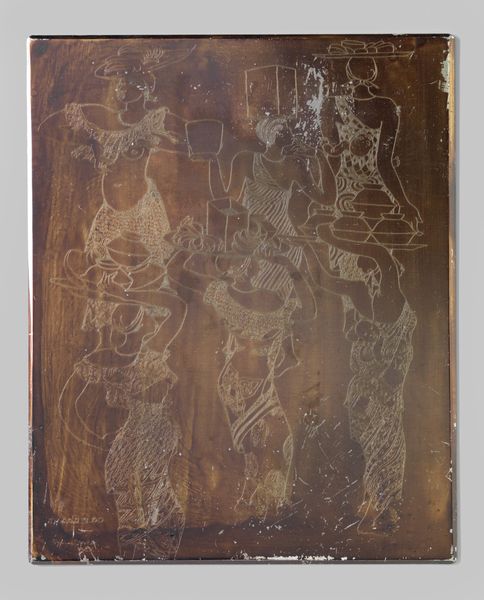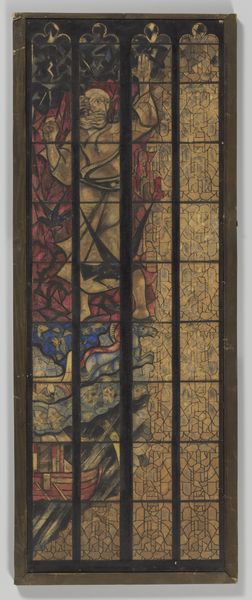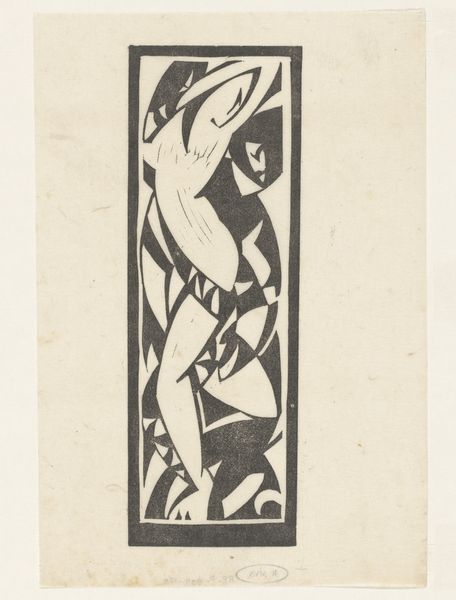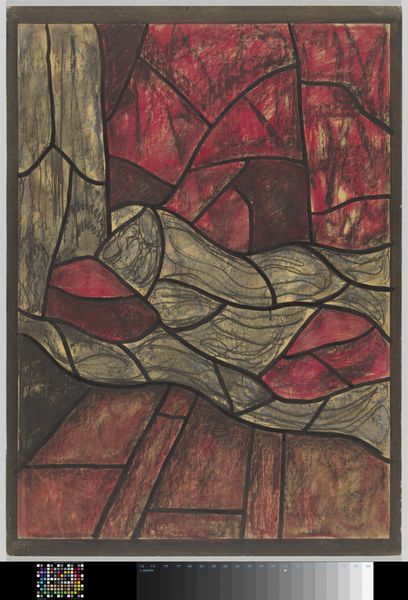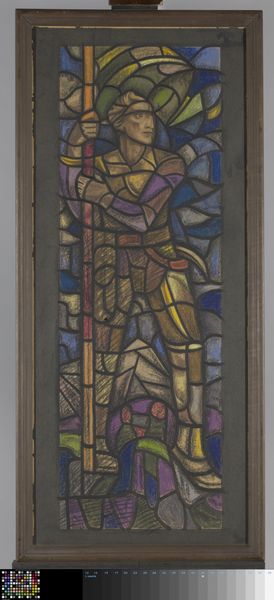
drawing, glass
#
drawing
#
art-nouveau
#
landscape
#
figuration
#
glass
Dimensions: 40 x 24 in. (101.6 x 61 cm)
Copyright: Public Domain
Editor: So, here we have William Lightfoot Price's Stained Glass Window, crafted between 1902 and 1905, and currently housed at The Met. It strikes me as quite minimalist for Art Nouveau, almost stark, in its depiction of a figure within this vast landscape. How do you read this piece? Curator: Minimalist is a fascinating observation. It is very Art Nouveau, yet there is something so raw about the depiction of labor. I am curious whether you noticed how this piece is simultaneously delicate and heavy-handed. Editor: You are right, that's quite a contrast. There's a real push and pull with those strong black lines against the brightness of the glass, creating almost an illustrative, comic-like aesthetic. What’s behind the bold graphic choices? Curator: Well, picture this window installed, sunlight streaming through! It must’ve felt entirely immersive. Think of this stark contrast as light engaging in this beautifully uneven tango with the glass and line, like whispers between day and night. The bold shapes suggest it may have been a narrative panel, part of a larger composition. What does the figure suggest to you? Editor: The figure looks almost to be struggling or digging—is this portraying an idealized working man of the era, or something more symbolic? Curator: Perhaps the piece embodies the idea that labor itself is illuminated? We often miss this in more gilded iterations of Art Nouveau. William Price is guiding our attention to the figure whose physical interaction with the land creates the space around him, so it also exists to define and even challenge what the style can express. Editor: That definitely re-frames my initial reading of it as minimalist. Thanks, it gives a lot to reflect on. Curator: My pleasure; a lot to chew on in such deceivingly simple imagery.
Comments
No comments
Be the first to comment and join the conversation on the ultimate creative platform.
